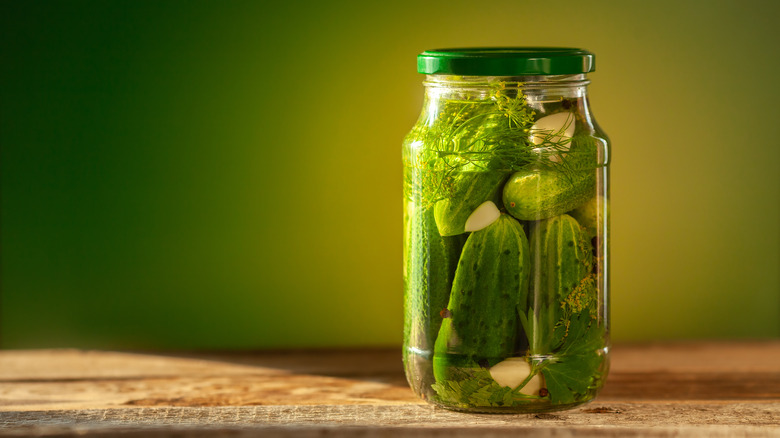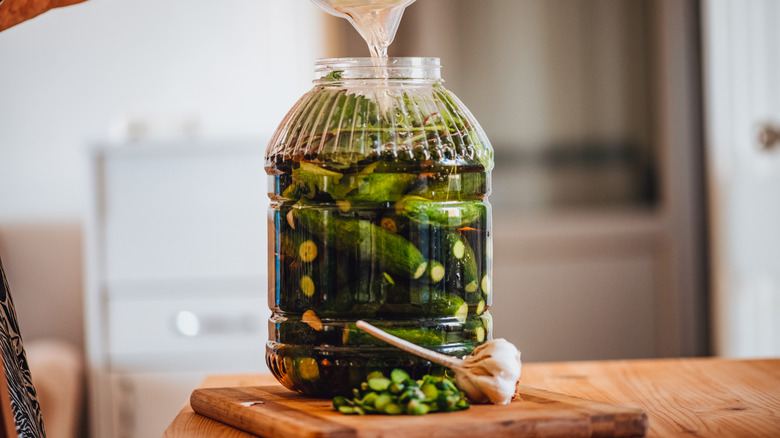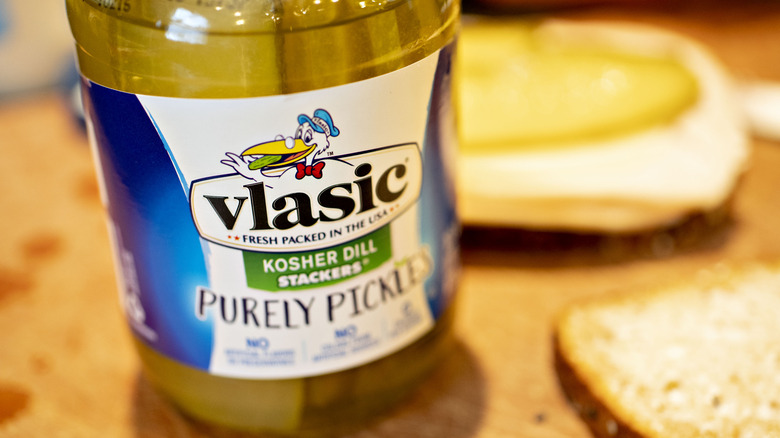Leftover Pickle Brine Is Actually Your Key To Future Pickles
If you love pickles and frequently go through multiple jars of them, stop right there and don't throw out that jar full of pickle brine. After you've finished eating the pickles, you're left with a jar of barely-used brine that you can use to pickle more things. You can make more standard cucumber pickles, pickled green cherry tomatoes, pickled string beans, pickled onions, or just about any kind of pickle you like.
The best part is that you barely need to do anything to your veggies to prepare them for pickling. All you have to do is cut them into your desired shape, as veggies with thick skins, like green tomatoes or cucumbers, pickle faster when their watery insides are exposed to the brine. Then, just plop them in the jar and wait a couple of days. The time it takes to pickle will depend on your vegetables, your brine, and your personal preference for how sour you like them, so you can do a taste test after about two days and go from there.
Customize your pickle brine
Your basic refrigerated pickle brine is made from water, salt, sugar, and vinegar, sometimes with added spices like mustard seeds, garlic, or peppercorns. Commercial pickle brines often contain more salt and vinegar than homemade brines, so if you think your store-bought brine is too strong, you can split it between two jars and water it down a little. You can also top it off with more white vinegar if you'd like your pickles to be more sour. And feel free to add spices or herbs to your brine, like red pepper flakes, fresh dill, coriander, or anything else you wish.
It's important to note that while your pickle brine can be reused, it will only work a certain number of times. After a few batches, your brine will lose some of its flavor. You can compensate for this once or twice by adding extra vinegar, but you will need to throw your brine out after a couple of months, as it could eventually go bad.
Other tips for reusing pickle brine
You can use any store-bought brine from any brand to make DIY second batch pickles. These brines will contain vinegar, which is essential to the pickling process, unless you happen to buy fermented pickles instead of pickled ones. Standard pickling uses vinegar or some other acid to flavor and preserve vegetables or other foods, while fermenting uses a salt brine to produce a probiotic reaction in which bacteria feeds off of the sugars in the vegetables, making them sour and shelf-stable.
On the off chance that you do purchase fermented pickles, you can still reuse that same brine to make more fermented pickles, but you won't want to top it off with vinegar like you'd do for classic pickled vegetables. Use fermented pickle brine within a few weeks, and add additional bacteria cultures if you need to.
If you know you want to save your vinegar based-pickle brine, but you don't know when you'll be able to use it, don't worry, because you can freeze it. Just don't try freezing a fermented salt brine, as the cold will kill the live cultures.



